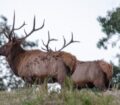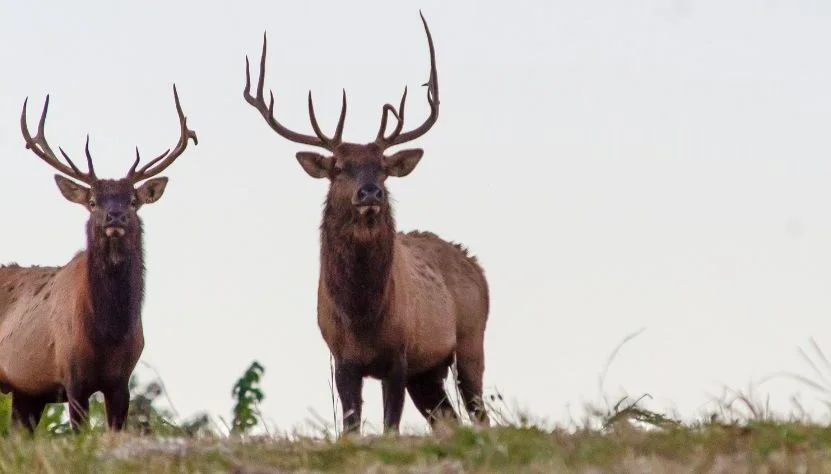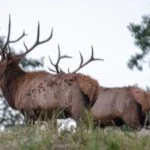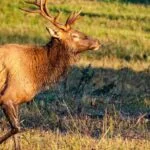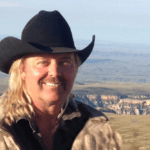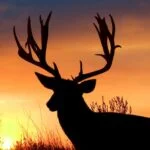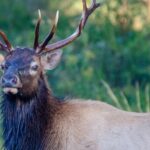Editor’s Note: Brian Mosley from Bloomfield/Farmington, New Mexico, in the northwestern corner of New Mexico, says, “What I like about where I live is I’m 55 miles from Colorado, 1-1/2 to 2 hours from Utah and a 1 hour, 15-minute drive from Arizona. I can drive to any of these states, hunt elk, and go home after the hunt. Plus, if I take an elk, I can return it home quickly. Another advantage about where I live in New Mexico is Colorado, which has some of the most elk in the western states; I can buy an over-the-counter elk tag.” Mosley has been hunting elk for 22+ years and has taken many elk – most with his bow. Mosley’s an avid elk and mule deer hunter but also enjoys being a football and track coach and a strength-and-conditioning coach for students at the junior high and senior high schools for the Bloomfield school system. For Mosley, the challenge of the mountains and hunting elk and mule deer in high terrain is just another day’s workout,
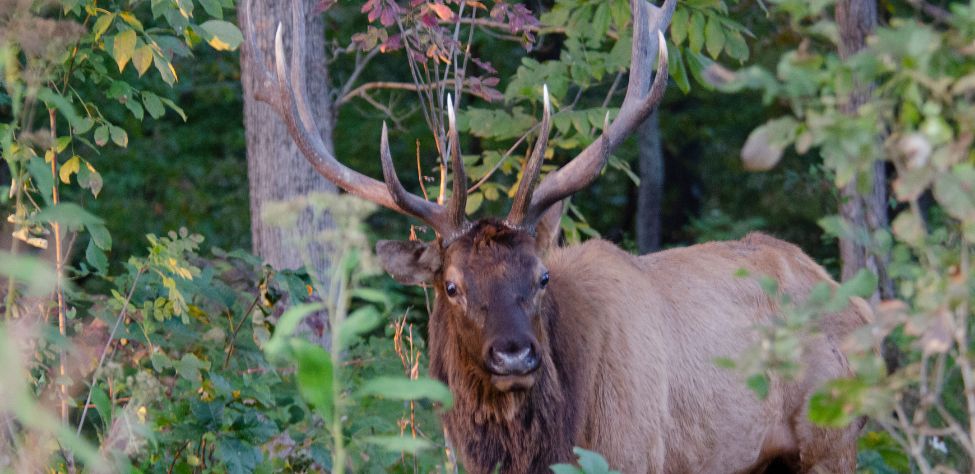
I hunted in the Santa Fe Forest and Wilderness Area in central New Mexico some years ago. I had picked out my hunt site from a map that showed a trail going deep into the woods to a high peak. From the map, I saw that I could look down into several different parks (meadows) below the peaks. Since I wanted to escape the crowd, I put a quality pack on my back and hiked 4 1/2 miles in before I started hunting on this day. I saw plenty of elk signs along the trail I used to get to my hunt site. Just before I reached the peak where I would look for elk, I cleaned myself up and tried to eliminate as much human odor as possible. Then, I slowly and quietly walked a little farther to glass the parks for elk.
My goal was to hunt that afternoon. Even if I didn’t take an elk, I would know where to start the following day; that evening, I failed to locate any elk. Before I went to hunt, I had set up camp just inside a group of trees. So, as darkness approached, I worked my way back to my campsite. That evening, I didn’t build a fire but ate and slept. I was awakened by elk bugling all around me at 4:30 am. Of course, I couldn’t sleep – not only due to the bugling but also because I was excited knowing I might have several bulls to hunt. In the dark, I got to a place where I thought I could call in a bull. At 6:30 am, I started calling.
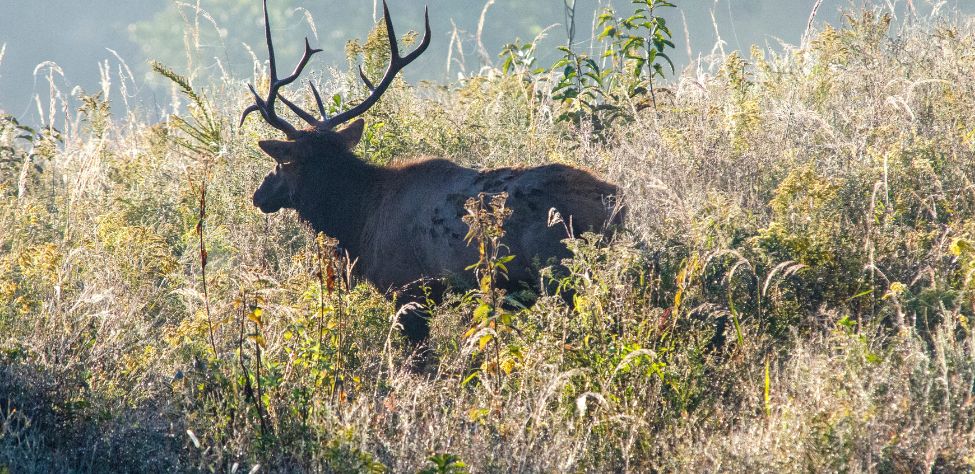
When I call to bulls, I use several different types of cow calls to sound like a herd of cows instead of just one lonely, lonesome cow. I returned to the same place I had hunted the evening before. As soon as I started calling, I saw four bulls approaching me. I had set up a Montana Decoy Company’s decoy so the bull would focus on the decoy instead of looking for me. I’ve found that when you hunt by yourself, you lose the advantage of having another hunter set up behind you and trying to call the elk past you. So, I like to use a Montana Decoy Company’s cow elk decoy when I’m solo hunting for two reasons:
- The bull elk will assume that the decoy is one of the cows that’s been calling to him, and he’ll look at the decoy as he comes into call.
- The bull won’t be looking at me if I’m sitting off to the other side of the decoy and more than likely will give me a broadside shot.
I felt confident I would take one of these four bulls because I’d been training for this hunt—through strength and conditioning in my high school coaching job and “Train to Hunt Competitions.” I also shoot 3D archery contests.
The first bull I spotted was 180 yards from me, coming straight to the decoy. As I watched that bull, I listened to two more bulls bugle coming in from behind me, but I never heard the bull I took on this hunt bugle. The bull came to my right and gave a light grunt. I turned around and looked behind me, and I could see the silent bull looking at my decoy. I was on my knees. I knew I had to turn a little bit to get a shot at this bull that was much closer than the other bulls. The bull jumped when he saw my movement. Then I mewed like a cow elk, and the bull stopped at about 40 yards. When I released my arrow, the bull wheeled, ran 30 yards, and dropped. I thought I heard the bull fall, but I looked at my watch and decided to wait 35 minutes before I went to him. When I reached him, I saw the arrow had gone through one side of the bull, and the broadhead was stuck in the opposite shoulder.
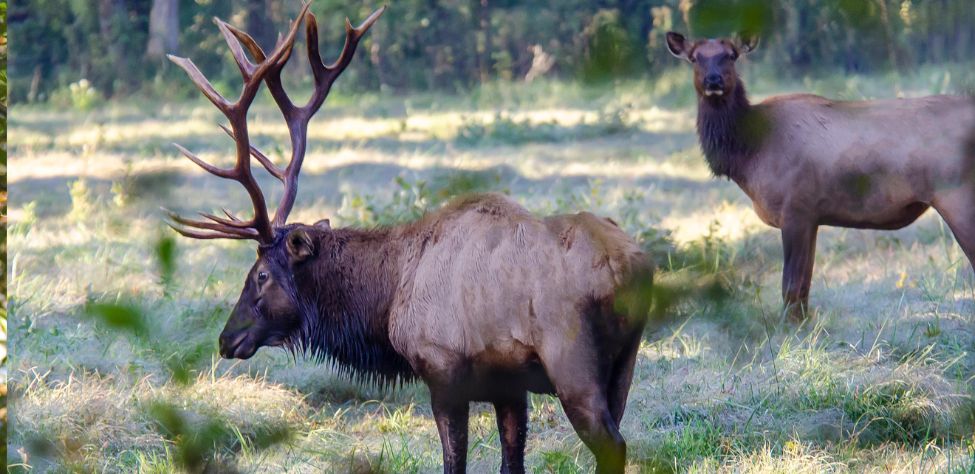
I knew I would have difficulty skinning, deboning, and getting that elk back to my truck, which was 4 1/2 miles away. However, luck smiled on me. Another hunter had been hunting bears close by. When I walked up to my elk, the hunter stepped out from behind some bushes, thinking I was a bear; however, he spotted me and the elk simultaneously. We began to talk, and we discovered that he was hunting in the wrong unit because he’d gotten lost. He stayed with me, helped me debone the elk, and helped me carry that elk for 4 1/2 miles out of the wilderness to my truck.
I had 100 pounds of meat in my pack, the bull’s head, and the bear hunter put about 100 pounds of meat in his pack. We had to make many stops to rest before we reached my truck. When we sat on a log at one of the stops, we couldn’t get back up with our packs still attached to our backs due to the great weight. So, we rocked back and forth until we could finally stand up. After exerting that much energy to stand up, we decided we wouldn’t stop again until we got to the truck. When we reached my truck, we saw his vehicle was parked next to mine.
This elk hunt for this 5×5 bull that scored 311 inches was the most grueling I remember. However, we got all the meat out in one trip. After we got the meat and the head in my vehicle, I slept for about 1 1/2 hours before I returned to my campsite to break down my camp and carry it out.
Looking for more content? Check out our YouTube channel and watch “Why Hunt in the Rain” by John E. Phillips.
Expert Guidebooks on Elk Hunting: Best Sellers
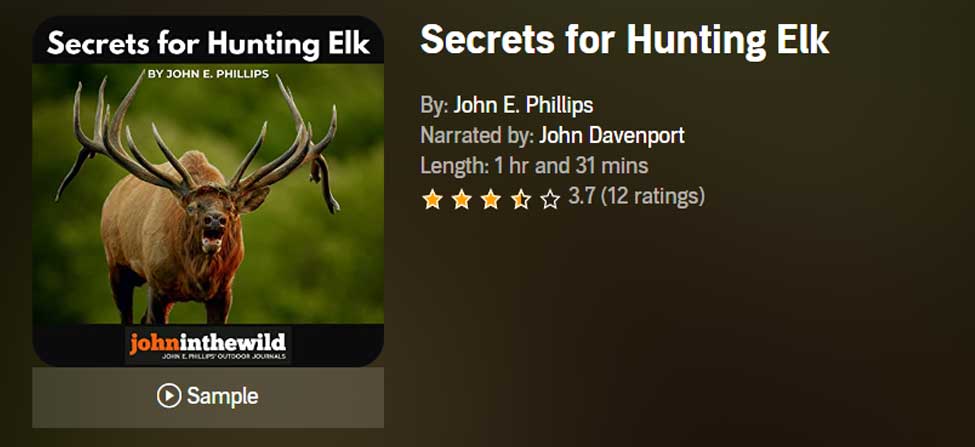
Secrets for Hunting Elk
The quickest, easiest (if there is an easy way), and safest way to find and take that bull elk of a lifetime will be to hunt with a guide.
Chad Schearer, a longtime Montana guide and TV personality, told me, “My hunter is my gun. If I get to the elk, and my hunter isn’t with me, then we don’t take the elk. My job is not only to find the elk but also to help the hunter get to the elk and make the experience as enjoyable as I can for him.” That’s the kind of fella with whom I want to go elk hunting.
An elk hunt can be tough, but it doesn’t have to be so tough that you don’t enjoy it. That’s why this elk hunting book starts with the confessions of an elk guide and with Chad Schearer’s philosophy of what the guide and the hunter’s relationship should be.
A good portion of your success will depend on your physical condition, and Matt Morrett of Harrisburg, Pennsylvania explains how an eastern hunter can get ready physically during June and July to hunt western elk, the animals he describes as, “Like deer or turkeys on steroids.”
Wayne Carlton, well-known elk hunter and TV and video personality from Montrose, Colorado, tells us what types of elk calls to use and what to say to the elk. Mike Miller of Colorado, another elk guide and Mossy Oak video personality, has tactics for the best equipment for bowhunting and gun hunting elk.
You’ll learn helpful strategies and hunting tips in this book, as well as some straightforward hunting methods that will help to make your elk hunt more successful.
“Thanks to the advice in your elk hunting books, I was able to call up a nice 6-point (6X6) bull elk! He was bugling like crazy. I called him in from about a ¼ mile away. Called him into bow range (about 40 yards away). It was a thrill!” ~Rob Brannon
VERSIONS: AUDIBLE & KINDLE
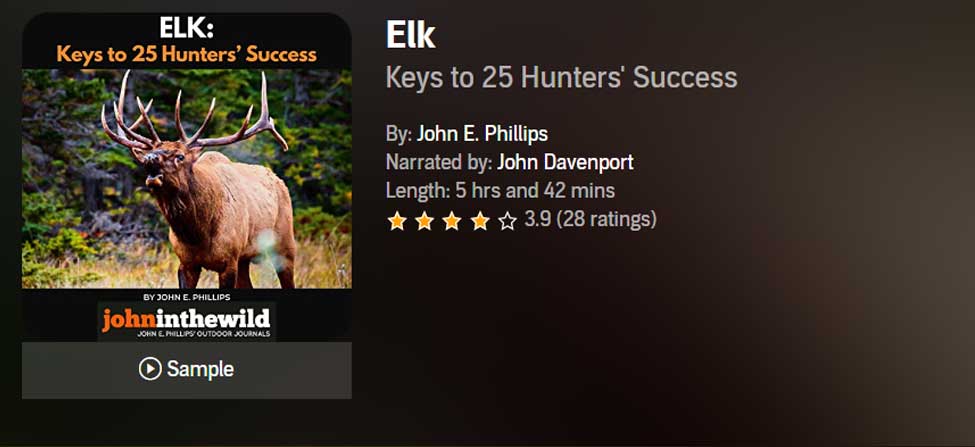
Elk: Keys to 25 Hunters’ Success
Often just one tip or tactic makes the difference in whether you take an elk home to dinner or have to hike back to the truck by yourself. In John E. Phillips’ latest elk book, Elk: Keys to 25 Hunters’ Success, you’ll learn from successful elk hunters the strategies they use to find and take elk.
Many know that the technique that seems to work most often is to hunt where other elk hunters don’t and understand where the elk are before you go on a hunt by studying data from each state, visiting HuntData (see chapter 1), examining maps, and reading postings on elk forums.
This book also tells you how to get ready physically for an elk hunt, including participating in Train to Hunt Competitions, what gear you need to take, how to enjoy a successful do-it-yourself elk hunt, or how to pick the best elk guide for you. You’ll also hear about the X System and the Broken Y System of hunting elk.
Although no one person has all the answers on how to help you find and take your elk, I’m convinced that this book’s outdoors men and women will teach you how to have satisfying elk hunts.
As my friend Karl Badger once told me, “Elk hunting doesn’t get any better than when I ride horses into the high backcountry, see two grizzly bears, hear a pack of wolves howl close to camp all night long, eat plenty of delicious food prepared on a fire and enjoy the company of good friends.”
VERSIONS: AUDIBLE, KINDLE & PRINT
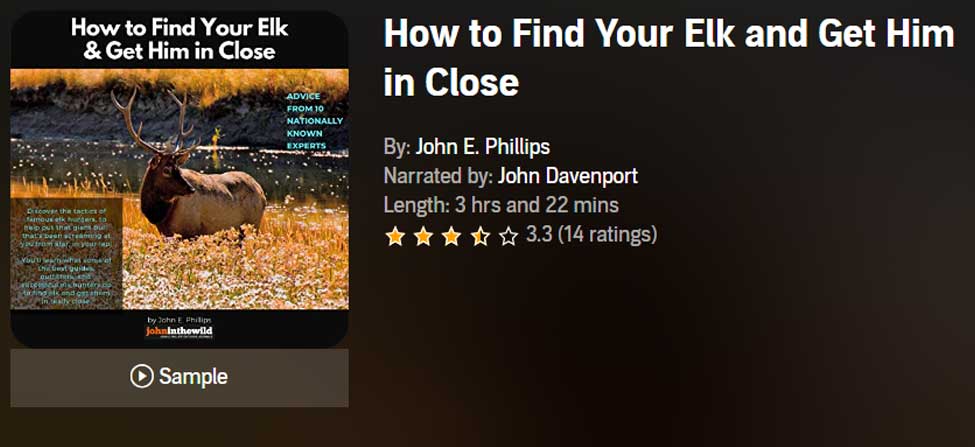
How to Find Your Elk and Get Him in Close will teach you the tactics of 10 nationally known elk hunters, to help put that giant bull that’s been screaming at you from afar, in your lap. You’ll learn what some of the best guides, outfitters, and successful elk hunters do to find elk and get them in really close.
Also in this audiobook, you’ll notice that the majority of the experts call elk to within bow range. We selected numerous bowhunters and bowhunting guides, since the bowhunter has to get much closer to a bull than the gun hunter does – often less than 20 or 30 yards – practically in your lap.
On one elk hunt, I’d heard this bull bugle all morning. My guide had called him within 30 yards, and he was standing just inside black timber. I saw the smoke from his nose wafting out into the icy air less than 30-yards away. All the bull had to do was step out, and I could take the shot with my bow. But then, through no fault of my guide or me, the bull vanished.
The only conclusion I could come up with to understand why the bull I wanted to take with my bow hadn’t stepped out and given me a shot, was because he got raptured. He evidently had left the earth with no trace of himself.
This hunt was when I started wanting to learn more about hunting elk up close. In this book, I’ve tried to find some of the most knowledgeable, experienced, and practical elk hunters. I’ve always found that the best way to learn any outdoor skill, is to either hunt or fish with the best sportsmen in that field.
Often, in elk hunting, that means elk guides, who generally hunt every day of the season and receive a salary for every hunter they guide. So, I’ve put together a group of some of the best elk hunters I know to help us all learn how to find bull elk and get them in close.
VERSIONS: AUDIBLE, KINDLE & PRINT
Tomorrow: Train to Hunt Competitions Help You Hunt Elk


